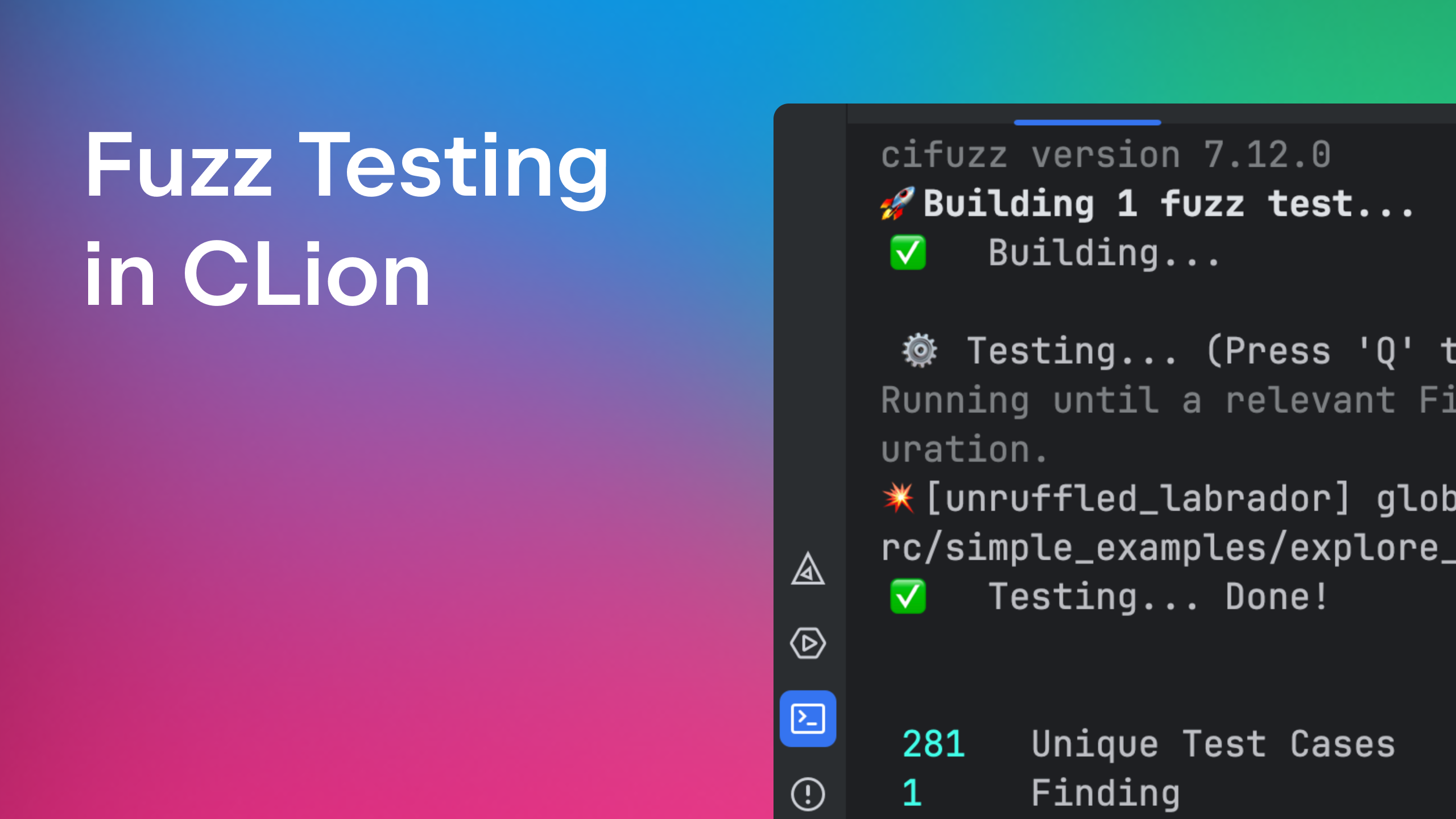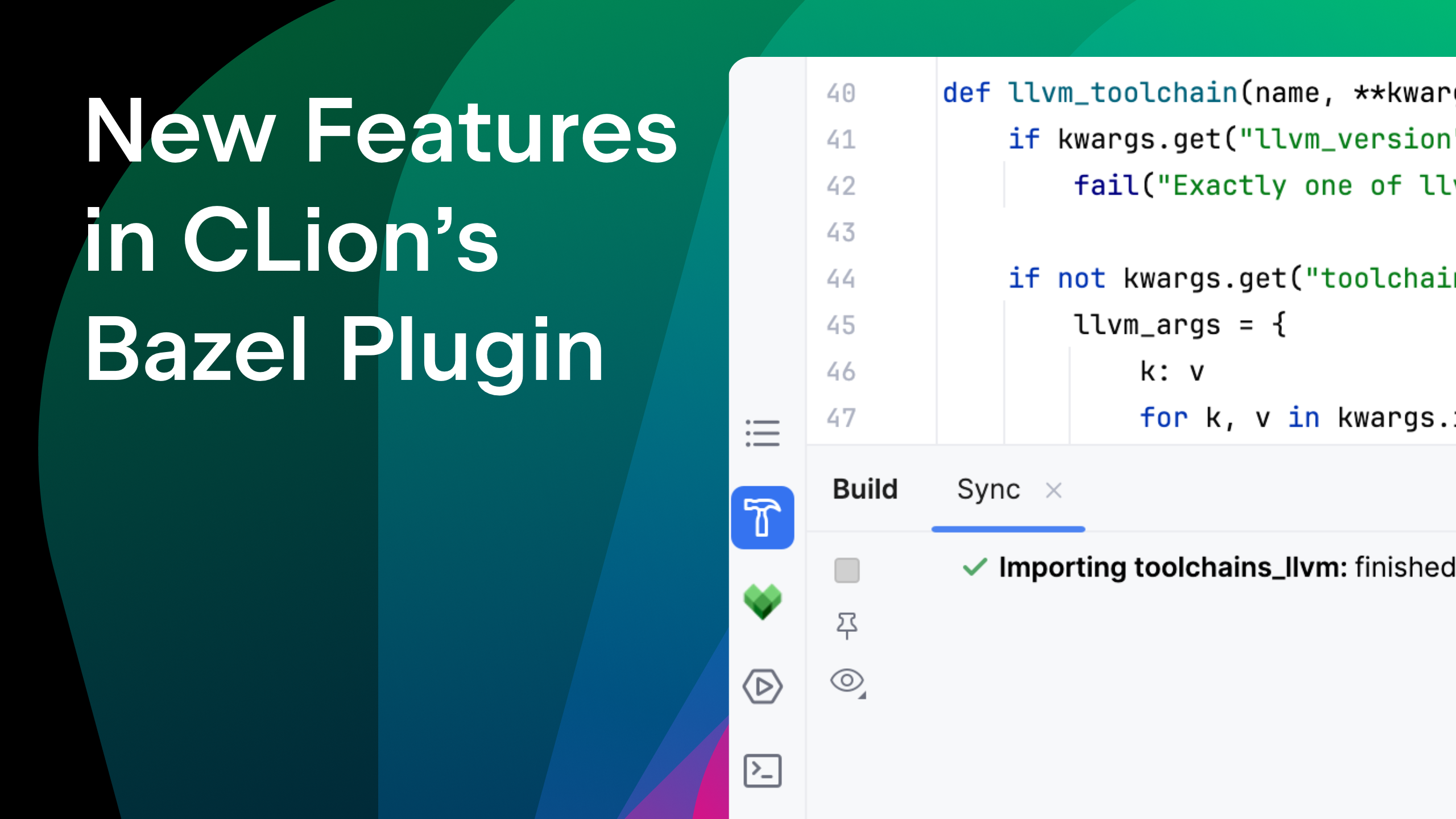Webinar Recording: CLion 101 and Beyond
On June 23 we ran a live webinar, “CLion 101 and Beyond”. Phil Nash demonstrated how to install CLion and get up and running with it quickly, and gave an overview of the top productivity-boosting features you should check out first.
The recording of the webinar is now available on the JetBrainsTV YouTube channel. Here are some useful timestamps so you can quickly jump to the section you’re most interested in:
01:42 – Installation & Initial setup, configuring toolchains
14:43 – Create a New Project, Build and Run
17:11 – Toolbox App
18:30 – Windows setup, configuring the toolchains on windows
24:25 – macOS toolchains setup
28:00 – IDE settings and customizations
34:50 – Coding assistance with CLion (create a new C++ class, auto-import)
38:46 – Clang-Tidy code checks
39:56 – Code generation with CLion
46:16 – Navigation through the types and subtypes, Implement function, Introduce Variable, Extract Function, Inline Function, Surround With templates.
49:30 – Navigation through complex code bases with CLion; IDE actions, and the fastest way to access them
53:10 – VCS and Local history
54:51 – Questions
Most interesting questions from the session
During the session we answered more than 70 questions ranging in complexity from very basic to very deep and detailed. Here are just a few of them:
Q: How do we enable plugins after installation?
A: Go to Preferences/Settings | Plugin menu. Please check out this list of valuable non-bundled plugins.
Q: Which compiler should I select, Mingw or Cygwin? I use Windows 10.
A: Both will work. On Windows, you can select between MinGW/MinGW-w64, Cygwin, Microsoft Visual Studio toolchain (with either MSVC or Clang-cl), and WSL/WSL2 toolchains. Please check this tutorial for Windows users in our online help documentation.
Q: I have a C++ project for many platforms (Solaris, VxWorks, and Linux). It is possible to use a custom build tool (not based on CMake) and how can I solve code symbols in CLion?
A: CLion currently works with CMake, Gradle, and Makefiles projects. If your project is using a different project model, you can still benefit from the advanced IDE features that CLion provides. For this, you need to open a project by loading its compilation database. For building, running, and debugging such projects from the IDE, you can use Custom Build Targets and Custom Run/Debug Configurations.
Q: How can we use multiple version control systems in the same project?
A: Go to Preferences/Settings | Version Control and specify which directory is managed by which version control system.
Q: Does CLion support CUDA projects?
A: CLion supports CUDA C/C++ dialect and provides it with code insight features. Also, CLion can help you create CMake-based CUDA applications with the New Project wizard.
Q: Which JDK do you recommend? OpenJDK or Oracle?
A: We recommend using JetBrains Runtime, maintained by the JetBrains team and bundled into CLion. It provides lots of specific fixes and performance optimizations.
Q: When I want to attach to the existing process with the debugger, I get permission denied. I can start CLion as root, but that does not help. Can I configure attaching to processes to use the sudo command?
A: This is called Debug as Root and is currently not supported in CLion. However, some basic implementation for Linux and Windows platforms might soon be available, even in 2020.2 EAP. We are working on it right now.
Your CLion team
JetBrains
The Drive to Develop
Subscribe to CLion Blog updates








